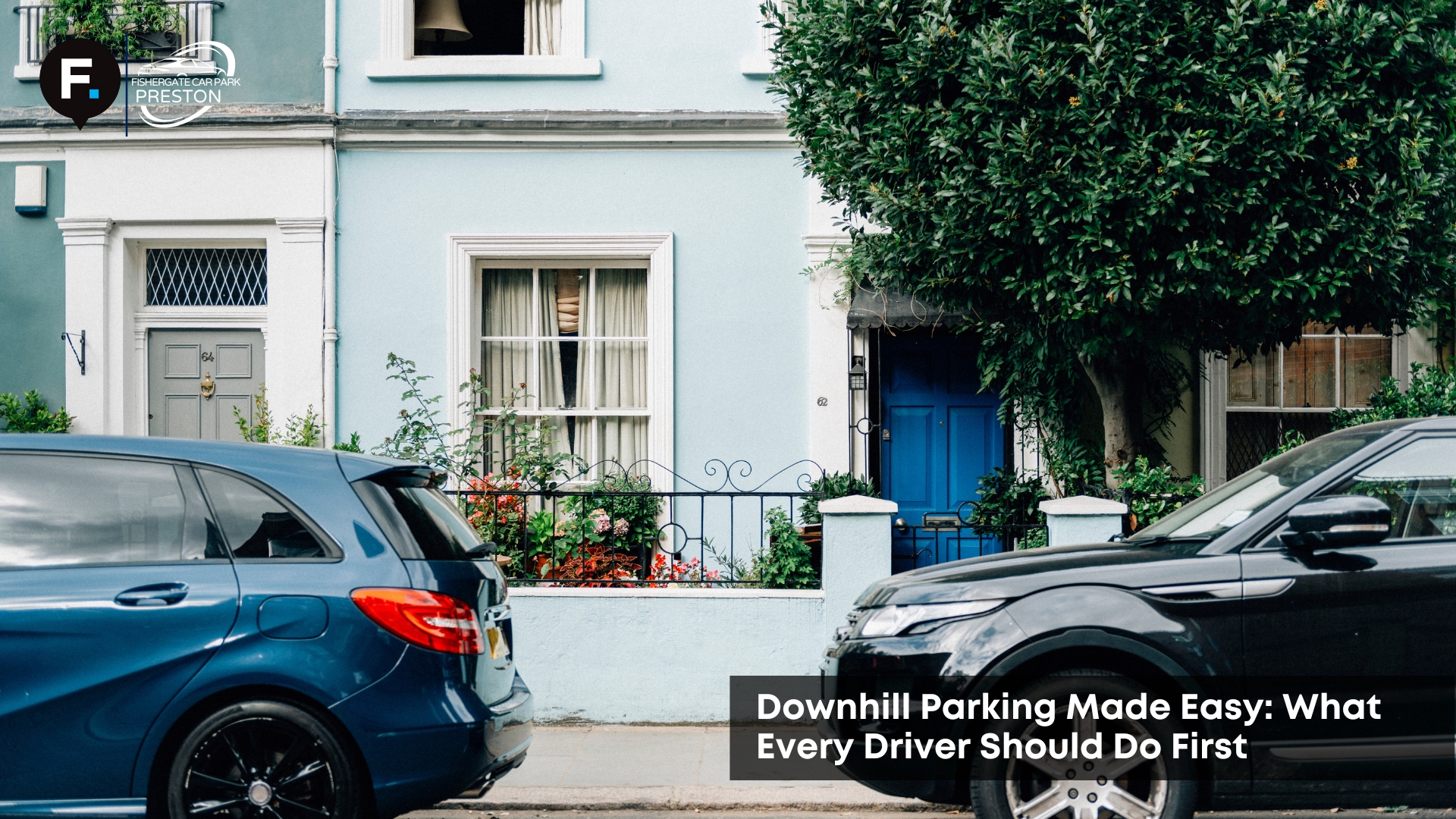Downhill Parking Made Easy: What Every Driver Should Do First
Ever wondered what you should do when parking a car facing downhill? Parking on a slope isn’t the same as leaving your car on flat ground, and missing just one safety step could cause serious trouble. Whether you’re a new driver or simply brushing up on your knowledge, understanding how to park safely downhill is essential. At Fishergate Car Park Preston, we provide clear and simple advice to keep you and your vehicle secure. Knowing what happens next can make all the difference.
Why Is Downhill Parking Different from Flat Ground Parking?
Downhill parking is different from flat ground parking because gravity can pull your car forward even when it’s stationary. Without proper precautions, your vehicle could start to roll, especially if your brakes or handbrake fail to function properly. It’s not just a matter of safety for your car, but also for others on the road or pavement nearby. Understanding how downhill slopes affect your vehicle is key to preventing problems before they happen. However, there’s a crucial first step every driver should be aware of.
What’s the First Thing You Should Do When Parking on a Slope?
The first thing you should do when parking on a slope is to stop your car fully and hold the brake firmly before placing it in park or neutral. This helps ensure your car stays steady while you prepare for the next safety steps. On a steep hill, even small mistakes can lead to significant problems, so it’s essential to stay calm and focused. Even at Fishergate Car Park, Preston, where slopes are minimal, we always recommend applying best practices. Now, what about the direction of your wheels?
Should You Turn Your Wheels in a Specific Direction?
Yes, you should turn your wheels when parking facing downhill by turning them towards the kerb. This way, if the brakes fail, your car will gently roll into the kerb rather than out into the road. It’s a simple trick that makes a big difference, especially in urban areas. Many drivers forget this small step, but it’s one of the most effective. Next, let’s look at your handbrake.
Do You Need to Use the Handbrake When Facing Downhill?
Yes, using the handbrake is essential when facing downhill to stop your car from moving. Even if you’re parked in gear or have automatic parking engaged, the handbrake gives added peace of mind. Make sure it’s pulled up fully and firmly each time. This keeps your car in place and removes any chance of it rolling unintentionally. But is that enough?
Is Leaving the Car in Gear Necessary for Extra Safety?
Yes, leaving your car in gear or using park mode in an automatic adds another layer of safety on a slope. For manual cars, select first gear or reverse, depending on the direction of the slope. For automatic cars, always set the parking brake. Combining this with your handbrake ensures extra protection. If the slope is very steep, consider a physical backup as well.
Can Wheel Chocks Help Prevent Rolling on Steep Hills?
Yes, wheel chocks can help prevent rolling on steep hills by physically blocking the tyres from moving. They’re especially useful in extreme weather or when parking for long periods. Although not always necessary, they offer strong reassurance on steeper inclines. If used properly, they work as a last line of defence. But ignoring these measures has consequences. For added convenience when parking on inclines or in busy areas, find parking near Preston station to secure a reliable spot in advance.
What Happens If You Don’t Park Correctly on a Downhill Slope?
If you don’t park correctly on a downhill slope, your car could roll forward, causing damage, injury, or even legal trouble. Parking incorrectly can also lead to fines or vehicle damage. That’s why steps like using the handbrake, gears, and wheel direction matter so much. Understanding the type of car you drive can also make a big difference.
Are There Different Rules for Manual and Automatic Cars?
Yes, there are different parking rules for manual and automatic cars when on a slope. Manual drivers should use gears and apply the handbrake fully, while automatic drivers must ensure the car is in park. Though both should follow the same basic principles, the specific methods differ slightly. And when the weather changes, so should your approach.
Is It Safe to Park Facing Downhill in Wet or Icy Weather?
No, parking facing downhill in wet or icy weather is not fully safe unless you take extra precautions. Slippery surfaces reduce friction, making it easier for tyres to slide, especially when parked incorrectly. Using wheel chocks, checking tyre condition, and taking extra safety steps are wise. For those responsible for larger facilities or public areas, exploring professional car park management services can also improve safety and reduce risks. That leads to the most important question of all.
How These Simple Downhill Parking Steps Keep You and Others Safe
Choosing the right service means fewer issues, better returns, and smoother day-to-day running. With tools like smart technology, fair enforcement, and clear customer support, a managed car park operates more efficiently. To understand how this works in practice, see details about a real-world example of seamless parking management. The best-run spaces are often the ones you barely notice—because everything simply works.


Leave a Reply